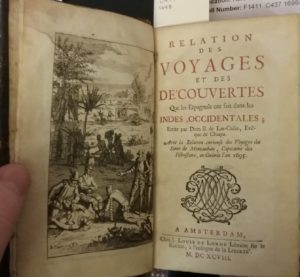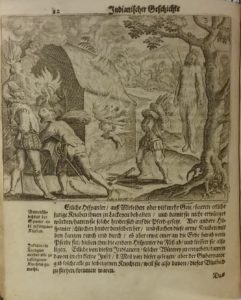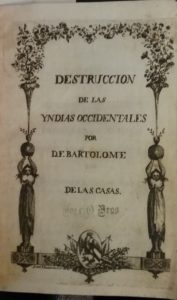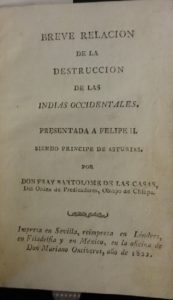Propaganda and the Beginnings and End of Spanish America
The arrival of Europeans in the Americas was an event of global importance, and its effect on the people already living here was devastating. That is why in 1552 the Dominican friar Bartolomé de las Casas wrote a book that he called Brevísima relación de la destrucción de las Indias, or A Short Account of the Destruction of the Indies. The book was so intensely critical of Spanish activities in the New World that it was used for centuries by the opponents of Spain as a way of criticising Spanish rule on both sides of the Atlantic, giving rise to what is now known as "The Black Legend." As a result, the book was printed in numerous languages, generally in countries that were at war with Spain.

(Rare Book F1411 .C437 1698)

(Rare Book F1411 .C448)
Special Collections already held a couple of these editions and has recently acquired a number of others, so that we now have editions of this book in English, German, French, Italian, and Spanish. Other editions were also produced in Latin and Dutch, although as yet we don’t have copies of these. Some are illustrated, with truly horrific scenes of murder and torture like those shown here, which once again served propaganda purposes, while others leave it to the words to convey the message of brutality.
One of the more interesting of our new arrivals doesn’t have pictures and is in the original Spanish, but its interest lies in where and when it was published and by whom. This is the 1822 Mexican edition, one of the first printings of this book in the Americas.
Moreover, this was the year after Mexico achieved independence from Spain, following a war lasting more than a decade. And the printer was someone who was himself a supporter of Independence and had printed books related to the struggle, Mariano Ontiveras. Thus this book is the perfect way to tie both ends of the story of Spanish activity in the Americas together – it describes the beginning of empire and was itself printed at the moment when independence movements were expelling the Spanish from most of the Americas.



